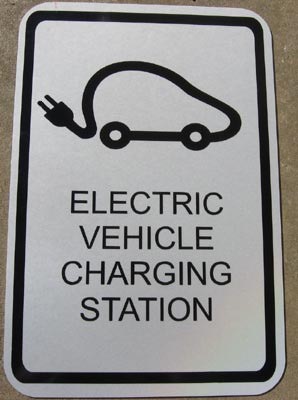May 29, 2015 – Washington state has a new law that gives power companies a new business opportunity, electric vehicle (EV) charging stations. Why?
Because one of the two reasons that EVs are not selling in huge numbers to-date is the lack of a publicly accessible charging infrastructure. Of course the other is range anxiety with EVs not being able to travel as far as conventional automobiles that use fossil fuels as the energy source.
To-date companies like Tesla have been building their own charging infrastructure to make their EVs more attractive to buyers. But to go coast-to-coast across North America in an EV is a feat that involves careful planning with stops at places where recharge stations exist. This isn’t the gasoline and diesel network that most car drivers are used to where one can find hundreds of places to get to a pump.
So Washington legislators decided upon a solution by co-opting companies that have already in place access to a nation-wide energy grid, the electric utilities. Seen as ideal candidates to build charging networks anywhere they have access to the power they own it seems like a perfect fit.
Washington joins Kansas and California in getting electric utilities into the business of serving EVs. Kansas City Power & Light will have 1,000 EV recharge stations in Kansas City in 2015. To date only 3,000 EVs have been sold in the state so clearly the utility will benefit by promoting EV purchases.
In California where there are more EVs than anywhere else in the world, southern Cal Edison, Pacific Gas & Electric, and San Diego Gas & Electric have promoted a program to build 60,000 EV recharge stations at a cost of $1billion U.S. That number would be greater than the total number of gas and diesel service stations presently in the state. The companies are awaiting approval from the state legislature.
Why would utilities want to get into this business other than the fact that this gives them more customers?
Because as more EVs are sold the power they draw from existing capacity has to be managed so that other customers receiving power are not negatively impacted. Imagine several million EVs recharging during peak period use and you can see where the utilities might have concerns. But if they are the providers they can build out the capacity warranted to serve the increased energy demand as more EVs get on the road. Of course it is anticipated that most EVs will be charged overnight in off peak periods.
In the Washington legislation it states, “The legislature finds that utilities, who are traditionally responsible for understanding and engineering the electrical grid for safety and reliability, must be fully empowered and incentivized to be engaged in electrification of our transportation system.” They propose an “incentive rate of return on investment on capital expenditures for electric vehicle supply equipment that is deployed for the benefit of ratepayers provided that the capital expenditures do not increase costs to ratepayers in excess of one-quarter of one percent.” The legislature will reassess the impact the legislation has on EV market growth and acceptance at the end of 2017. At that time the incentives may be waived or continued.
What else is coming down the pike?
The Washington legislation has no provision for power going the other way. Something called V2G where EVs send power to the grid as needed is expected to be a significant play within the decade. For those EV owners who pay for their recharge there will be an opportunity in peak hours to sell power back to the utilities. It will be interesting to see how legislation and regulation keeps up with this evolving technology.










